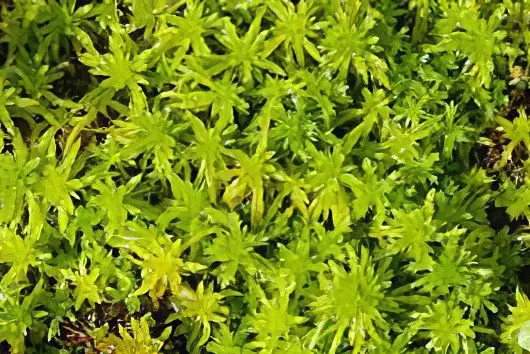Contents
Useful properties and application of moss sphagnum marsh
Description of sphagnum

Sphagnum is a unique spore plant that has no roots. Such an unusual perennial forms a rather thick soft carpet of a light green hue. The turfs of this plant consist of a large number of individual elements, annually growing tops. When the lower part dies off, a special brown peat layer appears. A low thin stem is seated with small narrow styloid leaves. The moisture capacity of protruding leaf blades is due to special pore cells.
This moss is very common in the tundra, polar-arctic and forest zones of boundless Siberia. As a rule, such a plant prefers raised bogs and northern forests.
Useful properties of sphagnum
The presented plant contains phenol-like substances and triterpene compounds, resins, sugars, pectin elements and other substances. Due to this composition, sphagnum prevents suppuration of wounds. Such a hygroscopic perennial is used as a dressing, which may not even be sterilized before use.
The revealed bactericidal properties of the leaves make them unique. Incredible suction power is much stronger than ordinary cotton wool. The breathability of sphagnum is such that even when rather wet, this moss is excellently breathable. Along with the antibacterial and disinfecting action, disinfectant and antifungal properties of the plant were found.
The use of sphagnum
Such a wonderful moss as sphagnum has been used since ancient times as a dressing due to its unique effect on the human body. Special substances determine its antiseptic and wound healing properties.
In the event of a fracture for transportation, this plant can be placed under the tire, which will become a kind of softening pad. It will help to avoid friction between the skin and the tire, while acting as a disinfectant. Such a plant is also used for dressings and making highly absorbent medical tampons.
The antifungal and antibacterial effect of sphagnum can be used to seriously combat various fungal skin diseases. This lightly dried plant can be used to make excellent shoe insoles. In addition, sphagnum will help to cope with unpleasant foot odor and increased sweating.
Sphagnum leaf
The unique sphagnum leaves are tiny, almost invisible scales. They very densely cover the stem and its branches. Such thin plates have a microscopic structure. When magnified under a microscope, you can see a kind of green grid with small white cells.
Each cell consists of many elongated living cells that are connected to each other at the ends. On closer examination, the emerald glow of the leaf plate will become noticeable.
Between the cells there are transparent gaps of irregularly oval shape. Such cellular reservoirs are considered dead and empty. Scientists call them water-bearing hyaline cells. When moss gets wet, these cells fill with moisture, due to which the plant acquires a greenish tint. The capacity of these cells is simply amazing: moss saturated with water can weigh 20 times more than when dry.
Types of sphagnum
Numerous plant species grow in fairly dense and dense clusters. They are able to form continuous carpets or large cushions on special sphagnum bogs.
Dry sphagnum. This species has unusual leaf plates that have special cells. They are able to hold a huge amount of liquid. Dry sphagnum moss is often used in summer cottages to cover heat-loving plants. Such moss will not allow trees and shrubs to freeze in winter. In addition, the presented moss is an excellent fertilizer.
Sphagnum marsh. Such a dioecious moss forms significant light yellow tufts. Stratified stems have outer cells with pores and spiral thickenings on the walls. Rectangular stem leaves with special fibers do not have a lateral border. The plant is expressed by chlorophyll-bearing cells. The distribution area is located in the northern borders of the plains. In Russia, such a plant is often found in Siberia, the Urals, the Far East, and also in the Caucasus. In some European countries, dense thickets of swamp sphagnum can also be found.
Sphagnum moss. The presented species is a very soft and porous plant with dense stems and spiral clusters. On the stems are numerous branches, which at the very top form an unusual shaggy head. Small leaves are expressed in a light green tint. They densely cover the stem. Under a microscope, you can see an uncountable number of unique cells that are characterized by increased hygroscopicity. Such narrow greenish cells are interconnected at the ends, due to which a mesh structure is visible. Transparent dead compartments are designed to be filled with moisture. Such peculiar water tanks easily draw in moisture and condense vapors.
Contraindications to the use of sphagnum
No contraindications for the use of sphagnum have been identified.









